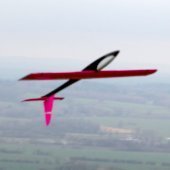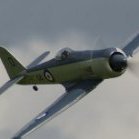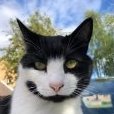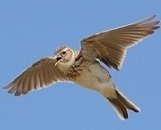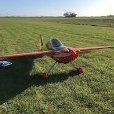Leaderboard
Popular Content
Showing content with the highest reputation on 22/12/21 in all areas
-
Well finally found some time to have a play. I have silver soldered horns to piano wire for elevator joiners, but that is about my limit, this joining pipework is new to me. So I cleaned up the metal and assembled the parts. A good friction fit meant it wasn't going to move if I had to add solder rod. First the flux was mixed with water and the area of the joint coated. Then I added a ring of solder as suggested. Heating the two pipes, further away from the joint first worked well and as it came up to temperature gradually worked towards the joint. Once the solder melted it pooled and a little more heat had it running, as John suggested, after the flame. I had to add a little more of the solder as it pooled away from the two ends, but it all ran together nicely once heated. And after a little tidy up, looked great, blocking the two end tubes and blowing in the middle proved it was indeed sealed as well as it looked. I have made a short video using the new GoPro, needless to say I wont be using that again lol Cheers Danny2 points
-
Had what felt like a full day of it yesterday..... At the field in the morning. Flew my EFlite PT17, which I am now actually starting to like, 3 years on; my Alt DLG and my Saito powered Valiant, now I finally have a replacement hatch. Just me, the birds, and worms. Only picture I have is of the worm casts stuck to my PT17 wheels. Spent a couple of hours indoor flying with a few club mates. Flew my Banggood Black Flyer and my Blade heli; 7 of us flying - just enough to ensure plenty of air time and a small profit on hall-hire. Then, in the evening, our last 2021 'Noggin and Natter' in the pub, talking random nonsense. A good day! Collecting Xmas food today, which will be far less relaxing.......2 points
-
Good flying day today, as Chris, not sunny but very calm. I flew my Xtra Wot, Zohd Orbit (FPV), AR Wing Pro and the quite quick Zohd Deltra Strike. My friend Ian flew, amongst others, this beautiful little (1s powered) seaplane2 points
-
This looks much nicer - and no more wobble! The OS one (with correct OS washer) from Just Engines:2 points
-
So, I've added some basic insignia. I hand made these using white Oratex and black vinyl tape. I dulled down the tape by sanding lightly and covering with matt water based clear. More flying after Christmas eh! Hope you all enjoy the festive season.. Cheers from Sunny Australia2 points
-
If anyone wants to try it, I've posted an initial version of erskyTx for the X20 here: erskyTx for X20. Lots still to do, but it is functional using the external module bay including support for the multiprotocol module. What is neat, I think, is you may install erskyTx alongside Ethos as a "dual boot" system, so you may continue to use Ethos, but switch to erskyTx to use the multiprotocol module. FrSky are OK with me doing this as long as I don't publish the parts of the source code that would reveal the hardware design, which is fair enough. I haven't had any technical data on the X20, so things take a while to work out. I'm doing this by reading a disassembly listing of Ethos to work out the connections. I've just found out how to access the touch screen hardware, but adding touch processing may take a while. Mike1 point
-
1 point
-
Don, I think you should tell me what does not impress you about my first paragraph, in which I have stated the facts as accurately as I am able to. One has to assume that the stated proportion of oil is correct. In the case of the Optifuel I mentioned, the content of both the oil and the nitromethane have to be right up to the full amounts stated by the supplier in order to explain the weight of the fuel. The nitromethane content would only be seriously in error if the suppliers had inadvertently added a lot more oil than stated, which is unlikely. The weights are easily measured on digital scales that are accurate to fractions of a percent. The estimate of the volume of water (via weight and density of water) is accurate to within a few cc's in 5 litres, i.e., parts per thousand. The densities at standard temperature and pressure are obtained off the internet. The whole measurement procedure only takes a few minutes. With the assumptions above, only three measurements are necessary: the weight of the fuel+container, the empty weight of an identical container and the weight of the latter filled to the same level (as the fuel) with water.1 point
-
Yesterday was nice and calm so quite a few turned out. My friend Tony gave his small models some air time.1 point
-
Well, while many of you have to put up with the snow and ice, here in Australia it's just the opposite; sun, surf, lobsters and prawns. I like this forum so decided to send you a special treat from down under, people in lockdown might appreciate it. Making Gravy Keep safe and well. Chris1 point
-
Very well done Jon. Your methodical approach both to trimming and test flying the Gangster is most impressive.1 point
-
So this afternoon's flying (cold but sunny!) proved the following: Normal elevator rate needed to be a tad higher than 50% so increased it to 55% (+7/-8mm, appx 11° each way) with expo reduced from 35% to 30% to make things less sudden towards full stick travel. High 'Stall' rate worked at treat at 100% (20° deflection): model slowed to idle, nodded and then rudder alone triggered an immediate spin whichever way I chose, with exit right on the money the instant the sticks were neutralised, and no ailerons needed at any time. So I experimented with dialling the rate down to find the optimum amount: 80% (16°) produced the same wallowing rubbish as normal rates. 85% (17°) reliably produced a stall and spin but only to the right (the right wing has some wash-in toward the aileron corrected by a tad of right-aileron trim - which explains why only the left wing will stall at this borderline rate). 90% (18°) reliably produces a stall and spin either way - the sweet-spot! Re landings, I'm finding that I can consistently flare out at the normal rate, so don't need to mess around (or risk a premature stall!) with the rate switch. Afterwards I asked an experienced club-mate if he'd like a go. He flew the B Test schedule beautifully, except his attempt at the spin (because I hadn't briefed him on the rate switch malarkey), and his stall-turn was just about okay (I hadn't mentioned the need for a modest blip of throttle to encourage the rudder over). He thought the Gangster had plenty enough power on the 46 generally, but found that knife-edge (he does it all the time on his own models without mixes) gradually lost altitude: maybe there's some blow-back on the rudder (which is heavily geared for travel not torque), or maybe this would just work better with the extra thrust from the 53 (which I'll be fitting next). Looks like the weather's going to close in from tomorrow onwards... but I've had a complete ball trimming out the Gangster and huge thanks for all the advice and discussion! Learnt loads! ???1 point
-
Test fit to check how they all line up. and glued and after drying overnight. but on inspection one stringer was not straight. On the Ballerina I had the same and left it bent which I regret every time I see it. Having learned that lesson I now correct any errors when spotted. It took ages to correct but now it's done I am happy. I have made a start on the other side which I will finish tomorrow.?1 point
-
Tidied the cowl up, added 1/64" ply sides and some "scale" air intakes, still a work in progress: Added 1/64" ply undersides and sheeted the turtle deck leaving cutouts to route the servo cabling through: Then it was on with the tail feathers, all built flat on the board from 5/16" balsa - quick and easy: I deviated from the plan on the elevator, keeping a single leading edge strip rather than the two halves Peter designed but still utilising the wire joiner. Once this was glued up I removed some of the back of the leading edge in between the two tailplane halves and added a small chamfer so as to allow enough clearance for down elevator. On to this I epoxied a 1/32" ply plate. I then fabricated a brass and piano wire "paddle" which will locate in to a ball joint, this was then epoxied and screwed to the aforementioned ply plate: Time then to dry fit it all together to ensure I have enough travel, the plan calls for max 1" elevator throws, I'd be surprised if I need that much but I have it if needs be:1 point
-
On to the main wing servo slots. The slots are pre-cut for mini servos but there is a dotted outline if the slot for standards servos needs to be cut. I am using http://www.macgregor.co.uk/macservo/mac7232hv.htm which might seem a bit of overkill, but I had these left from my now trashed Extra 330SC. Fortunately, there were all ok after testing.1 point
-
Same treatment for the rudder while adding the horns fo both rudder and elevator in the pre cut slots. All tied up.1 point
-
Not sunny, but 2 mph gusting 4 mph was just too much of an opportunity not to be missed this lunchtime. Even managed to land it on the third attempt by trimming the tick over to super slow, that Laser 150 still shifts some air even at that RPM! Still surprised that the rudder is so ineffective on the ground and lively in the air ?1 point
-
My Blackburn 1912 Monoplane (RM 140 plans (UK Radio Modeler or - Sarik Hobbies MAG1523 plans) Built and flown long long time ago, used just rudder, elevator and throttle, plus brushed motor, Olympus belt drive, 11" x 7" prop, and brushed motor and Nicad (probably 6 cells), flew great using rudder, looked very realistic. But, if you are looking for an aerobatic speed machine ......... Ray.1 point

